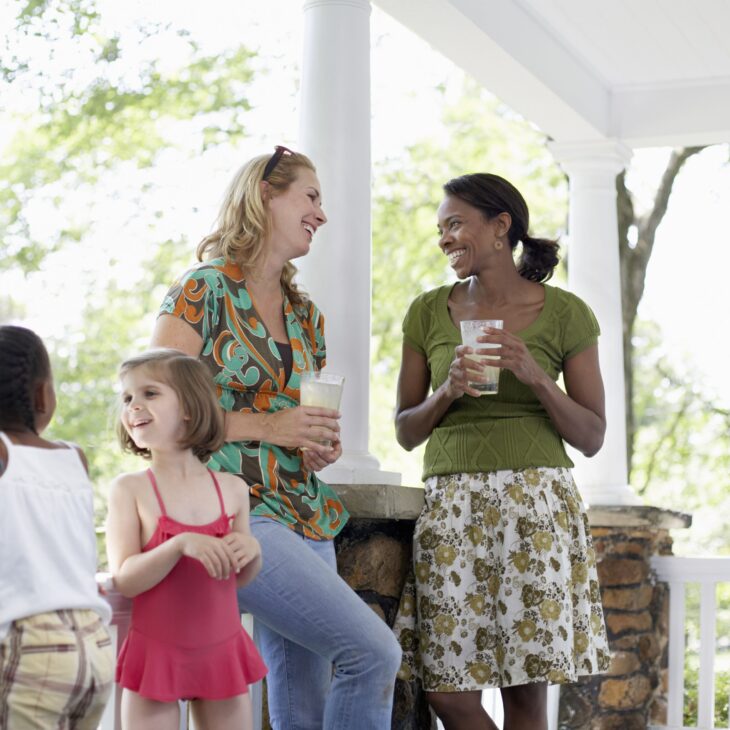The last two years have certainly been challenging. Between coming to terms with COVID in 2024 and trying to get life back to normal in 2024, many of us are ready to put the last 24 months behind us. As we turn the page on 2024 however, safety is still important. Moreover, safety at home goes well beyond just preventing COVID infections.
Safety at home covers a full array of things – from burglary to fire and carbon monoxide (CO) poisoning. It is not enough to keep your doors locked and have a working smoke detector in the kitchen. Times change. And as it marches on, we have to adapt to the environment in which we live. That means adapting the safety measures we rely on to keep ourselves and our families safe.
Are you committed to making 2024 a safer year? If so, you will find a collection of common-sense home safety tips below. Every tip you can implement will help you take a step toward making your home as safe as it can possibly be.

Source: thisoldhouse.com
Contents
Upgrade Smoke and CO Detectors
Next to burglary, fire and CO poisoning are among the biggest concerns of homeowners who choose to install home security systems. That says something. It says that people legitimately understand the threats. If that sounds like you, make 2024 the year you upgrade your smoke and CO detectors.
If either type of detector in your home is more than five or six years old, it is outdated. It may not even work any longer. When was the last time you tested it? At any rate, the newest smoke and CO detectors offer the latest technology for even better protection.
If you need motivation, take a look at statistics detailing the number of people who die in house fires or from CO poisoning. The numbers are truly scary. Fortunately, deaths and injuries can be avoided with sufficient warning. That is why smoke and CO detectors exist to begin with.
Secure Common Entry Points
When it comes to burglary and home invasion, criminals have a tendency to look for the easiest entry point. In most homes, this means a first-floor door or window. One of the easiest things you can do to prevent unauthorized entry is to secure these common points with heavy-duty hardware.
At the very least, all first-floor doors should be equipped with heavy-duty deadbolt locks. Deadbolts are more difficult to breach quickly and quietly. As for first-floor windows, do not rely solely on the locks installed at the factory. Invest in some heavy-duty window locks from your local DIY hardware store.
If your home has a basement, consider replacing single-pane windows with block glass. A block glass window is nearly impenetrable. Its construction also makes it difficult for burglars to actually see what is in your basement.

Source: m.made-in-china.com
Install Video Security Cameras
As long as we are talking burglary and home invasion, consider installing video surveillance cameras at key locations around your home. One camera should give you a clear view of the front door. Mount another to provide a clear view of the back or side door. Finally, a camera or video doorbell that gives you a decent view of the street and driveway also helps.
Vivint says that the purpose for installing video cameras is twofold. First, cameras act as deterrence. Criminals know that video feeds increase the chances of being discovered. They will avoid cameras when possible. Second, video feeds are useful tools for investigating crimes and prosecuting criminals.
Remove the Clutter
Not all home safety issues are related to forced entry, fire, and carbon monoxide poisoning. There are other sorts of safety issues to think about, including the presence of excessive clutter. A cluttered house is one more likely to invite slip-and-fall accidents, especially among seniors.
A good rule of thumb is to remove all clutter so that you have a clear path to walk through every room and between rooms. Keep hallways clear of furniture, knick-knacks, coat racks, etc. In the living room, make sure you have enough space to move freely between the couch and coffee table.
Leave yourself plenty of room to walk around each of the bedrooms in your home. This is especially important given the fact that you might get up and walk around in the dark. As for all the other rooms in your house, the general rule of thumb is to remove anything that could impede free movement.

Source: verywellmind.com
Cooperate with Your Neighbors
The last common-sense tip is one that does not get talked about a lot. Here it is – find a way to cooperate with your neighbors in order to make everyone safer. You’d be surprised at just how effective a group of neighbors can be when everyone is watching out for everyone else.
For starters, watchful neighbors are more likely to spot unusual activity. They know what is normal for the neighborhood. They know when something looks suspicious. When you and your neighbors work together, you create a blanket of coverage that makes it harder for criminals to do what they do.
Safety Is No Accident
The long and short of all of this is that safety at home is no accident. The more effort you put into being safe, the more effective your strategies are. Very little effort means less safety while maximum effort means more. It is really that simple.
This year promises to be filled with new challenges on every front. Why not face the coming year with a commitment to make your home safer than it was last year? The alternative is to continue as-is and hope you or a family member does not become the next statistic.

Source: atlantictraining.com
In closing, remember this: most of what goes into making a home safe is really just common sense. Being safe is a matter of avoiding carelessness and implementing whatever strategies you have available to you. Just a few basic things can go a long way toward significantly improving safety.
